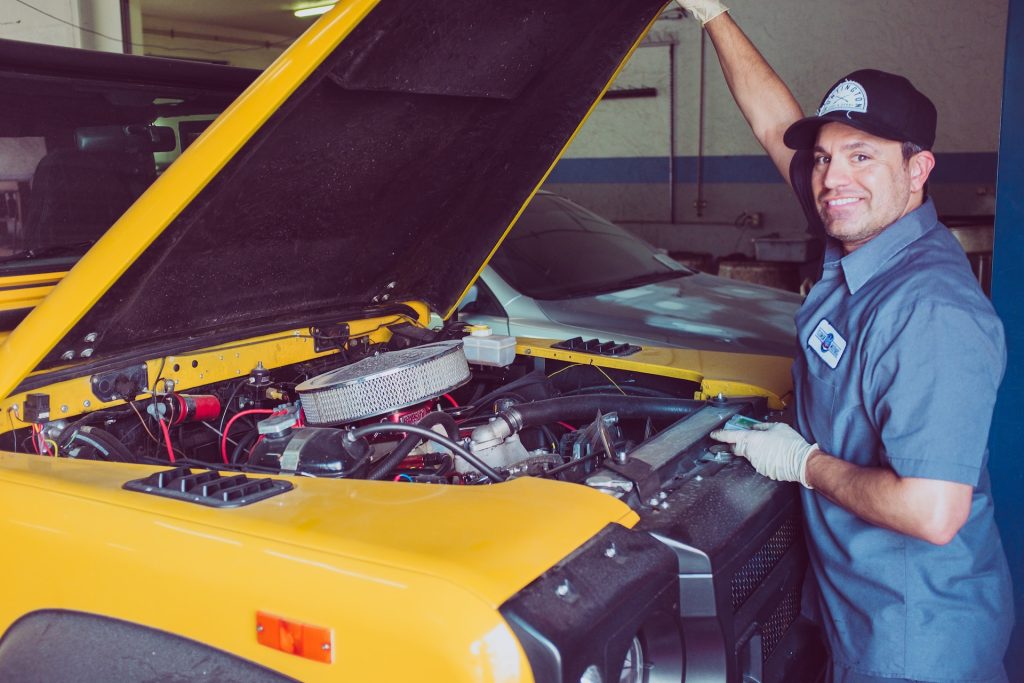The way a spark plug functions, particularly in terms of its spark plug gap, can significantly impact an engine’s performance. For this reason, we will therefore look closer into and answer the question “Do E3 Spark Plugs Need to be Gapped?”
The spark plug gap is an important component in the ignition process because determines the distance that the spark must jump to ignite the air-fuel mixture within the engine’s combustion chamber. The gap is often overlooked but it actually plays a great role in the engine’s overall efficiency, power output, and emissions performance.
E3 Spark Plugs have gained popularity for their purported benefits in improving engine efficiency and reducing emissions. However, one question among automotive enthusiasts and mechanics alike is whether these advanced spark plugs require meticulous gap adjustments.
The Basics of Spark Plug Gaps
Before we take a closer look into the considerations surrounding E3 Spark Plugs and their gap requirements, let’s first begin with the foundation regarding spark plug gaps in general.
The spark plug gap is the distance between the center and ground electrode of the spark plug. Whilst it may sound important, it is at this minuscule gap where the magic happens. This is where the electrical spark arcs across, igniting the compressed air-fuel mixture within the engine cylinder. The gap’s size is a critical factor that directly influences the intensity and reliability of this ignition process.
How does spark plug gap affect ignition?
The spark plug gap’s significance lies in its direct connection to the engine’s ignition system. A correctly set gap ensures that the spark occurs at the precise moment needed to ignite the air-fuel mixture. If the gap is too wide, it can result in a weak or inconsistent spark. The consequences of this may be misfires and reduced engine performance. On the contrary, a gap that’s too narrow can cause premature ignition and potentially damage the engine.
Moreover, the proper gap ensures efficient combustion which translates to optimal power output, fuel efficiency, and reduced emissions. In other words, the spark plug gap directly affects the overall performance and longevity of your engine.
Traditional Spark Plug Gapping
Let’s take a closer look at the conventional methods employed to set these gaps correctly.
Manual gap adjustment methods
Setting the gap has typically been a hands-on affair for traditional spark plugs. Mechanics and DIY enthusiasts have relied on simple tools such as feeler gauges and gap adjustment tools. These tools allow precise measurement of the gap and manipulation of the ground electrode to achieve the desired distance. It’s a meticulous process that requires a steady hand to ensure accuracy.
Challenges and limitations of traditional gapping
While traditional gap adjustment methods have been used for decades, they do have some challenges. Firstly, it’s a time-consuming task, requiring patience and precision. Secondly, it is a tricky task, particularly for those that are not experienced. This leads to gaps that are either too wide or too narrow. In addition, the accuracy of the gap can be affected by factors such as wear and tear on the spark plug or the quality of the tools used.
Importance of precise gap for specific engine requirements
The specific gap required for an engine varies based on its model, and sometimes even the manufacturer’s recommendations. At the same time, it’s important to achieve, the right gap to ensure the spark plug functions properly. Having a spark plug with incorrect gaps can lead to issues like reduced power and fuel efficiency to increased emissions and engine damage.
E3 Spark Plugs: An Introduction
Now that have a good understanding of the mechanics of traditional spark plug gapping, it’s time to dig into E3 Spark Plugs. This is a modern innovation that has in many ways revolutionized automotive ignition.
E3 Spark Plugs have gained popularity due to their unique design and performance-enhancing features. They have a distinctive diamond-shaped side electrode which differs from the traditional cylindrical configuration seen in conventional spark plugs. This design is intended to improve the spark’s propagation and combustion efficiency. This leads to better engine performance, reduced emissions, and enhanced fuel economy.
How E3 Spark Plugs differ from traditional spark plugs
E3 Spark Plugs use advanced materials and engineering. The plugs have a specialized yttrium-enhanced alloy in the electrode which ensures long-lasting durability and consistent spark performance. Additionally, the design minimizes electrode wear which prolongs the plug’s lifespan compared to traditional spark plugs.
One of the key selling points of E3 Spark Plugs is their claim to reduce the need for manual gap adjustments. This assertion is based on their advanced design and manufacturing processes which aim to provide a preset gap that aligns with the requirements of most modern engines. This preset gap is intended to simplify the installation process and eliminate the task of manual gap adjustment.
Do E3 Spark Plugs Need to be Gapped?
So, do E3 Spark Plugs really free us from manual gap adjustments? Let’s find out.
Some might assume that E3 Spark Plugs, with their advanced design and claims of preset gaps eliminate the need for manual adjustments. However, not all engines are created equal. Factors such as engine type, manufacturer recommendations, and specific performance needs may still mean that you need gap fine-tuning.
The good news is that E3 Spark Plugs arrive with a preset gap size right out of the box. This preset gap is carefully engineered to align with the requirements of many modern engines. The idea is to simplify the installation process and make it more accessible for individuals without specialized tools or expertise in spark plug gapping.
However, as already discussed, not every engine is a perfect match for the preset gap. Variations in engine design, fuel type, and intended use can influence the ideal spark plug gap. For high-performance or specialized applications, tweaking the gap might still be necessary to optimize ignition and combustion.
The necessity of gap adjustment with E3 Spark Plugs
So, the answer to whether E3 Spark Plugs need to be gapped or not is a nuanced one. In many cases, these plugs offer a convenient, “plug-and-play” solution that eliminates the need for manual gap adjustments. But in some cases, a degree of customization might still be needed.
The Impact of Incorrect Spark Plug Gapping
While small, the spark plug gap is a critical aspect of engine performance. When the gap is either too wide or too narrow, it can negatively affect your engine. A gap that’s too wide can lead to weak or inconsistent sparks which causes misfires, reduced power, and poor fuel efficiency. On the contrary, a gap that’s too narrow might result in premature ignition which can damage the engine and reduce its lifespan.
If improper spark plug gaps are left unaddressed, they can lead to more severe problems such as engine damage. This damage can cause pinging or knocking noises, increased exhaust emissions, and even damage to the catalytic converter.
Spark plug gaps also have safety implications. A poorly gapped spark plug can lead to engine misfires, which might be especially dangerous in critical driving situations.
E3 Spark Plug Installation and Gap Adjustment
Now, let’s dive into the practical aspect of installing E3 Spark Plugs.
Steps for installing E3 Spark Plugs
- Safety First: Begin by ensuring the engine is cool to the touch. This prevents accidental burns and allows for a safer work environment.
- Identify the Correct Plug: Match the new E3 Spark Plug with the one you’re replacing. You want to make sure that it’s the correct part for your vehicle’s make and model.
- Gather Tools: Collect the necessary tools, including a spark plug socket, a ratchet wrench, and an extension.
- Remove the Old Plug: Carefully disconnect the spark plug wire or ignition coil. Use the spark plug socket to loosen and then remove the old spark plug.
- Inspect and Clean: Inspect the old spark plug’s condition. A clean, light-gray electrode indicates proper engine operation. If it’s worn, fouled, or damaged, it’s important to address any underlying engine issues.
- Prepare the New Plug: Examine the gap of the new E3 Spark Plug. While these plugs come with preset gaps, it’s wise to double-check the gap’s measurement using a spark plug gap tool or feeler gauge. Adjust if necessary to align with your engine’s specifications.
- Install the New Plug: Carefully thread the new E3 Spark Plug by hand into the spark plug socket and ensure you don’t cross-thread it. Once hand-tightened, use the ratchet wrench to snug it down. Be cautious not to overtighten as this can damage the plug or the engine’s threads.
- Reconnect the Wire or Coil: Reattach the spark plug wire or ignition coil to the new plug. Ensure it clicks into place securely.
- Repeat the Process: Repeat these steps for each spark plug in your engine and maintain consistency in gap adjustments if needed.
When and how to adjust the gap
As mentioned earlier, E3 Spark Plugs are designed with preset gaps that align with many engine requirements. However, in certain cases, things like engine modifications, specific performance goals, or unique engine designs may lead to the need of gap adjustments.
To adjust the gap on an E3 Spark Plug, follow these steps:
- Use a spark plug gap tool or feeler gauge to measure the current gap.
- If the gap needs adjustment, gently bend the ground electrode with the appropriate tool to achieve the desired gap size.
- Recheck the gap to ensure it matches your engine’s specifications.
- Once the gap is correct, proceed with the installation process as outlined above.


